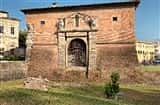Stay
Visit a locality browsing the menu on the left. In each Italy area you can then choose the best touristical structures we are proposing.
More About
Here you can find info and tips about the area you are visiting.
Most viewed in
Italy
-
History, traditions and art, these are aspects of the Amalfi coast that can be enjoyed not only on land but also in every ravine and sandy cove seen from the sea, in the complete peace and freedom that this panorama offers. To climb aboard a boat and...
-
The Amalfi Coast, suspended between sea and Sky, is a land of an amazing beauty. Our wish, having the pleasure to be your driver/guide, is to share with you the traditions, art, history, landscapes and the beauty that makes this land, " The Divine Amalfi...
-
Villa Casale is a splendid patrician villa of probable Medieval origins, set in the magical scenery of the City of Music, suspended between sky and sea; it is the ideal place for spending an exclusive and relaxing holiday in one of the most beautiful...
-
Bella Baia Glamping is the opportunity that was missing on the Amalfi coast for enjoying an exciting holiday in close contact with nature! In Cannaverde, just 2Km from Maiori center, along the scenic SS. 163 "Amalfitana", Bella Baia Glamping has a large...
-
Tucked between the rock and the sea, just a few steps away from the famed BlueGrotto, one comes across Il Riccio, the new restaurant and beach club of the Capri Palace Hotel & Spa. After extensive refurbishments of the historic Add'O Riccio, the restaurant...
Print this page
Send to a friend by e-mail
The furnace of Porta San Donato
-

The structure of the furnace of Porta San Donato was, in the local area, an unique example in its genre. Characterized by a rather particular conformation, linked to a production of "fine ceramics" , although it has also been used for the production of common ceramics frequently used in the preparation of Lucca dining tables. Why was used a furnace with this conformation for the production of precious artefacts with so little demand at local level? The answer to this question is in the historical documents about the furnace and its use.
We learn from these documents that in 1643, after the creation of a new entrance to the city, the huge spaces of the old gate of San Donato, were assigned to the Genoese craftsman Giovanni Antonio Salomoni, for the creation of a pottery factory. The furnace "indirect cooking" was necessary in the production of high-level majolica. Unfortunately we do not have findings of this production. Instead we have a large amount of artefacts related to the production of the so-called «graphite» ceramic, a much more common type.
It is natural to think that the Genoese craftsman Salomoni had come to Lucca to export in our area his precious majolica, for the creation of which a proper structure was needed. Unfortunately, this product was unsuccessful in Lucca, and Salomoni was forced to choose for the production of less valuable ceramics, but very much in demand locally. The production was then changed, but the structure of the furnace remained the same, this allowed him to use a refined workmanship in the production of a more common material.